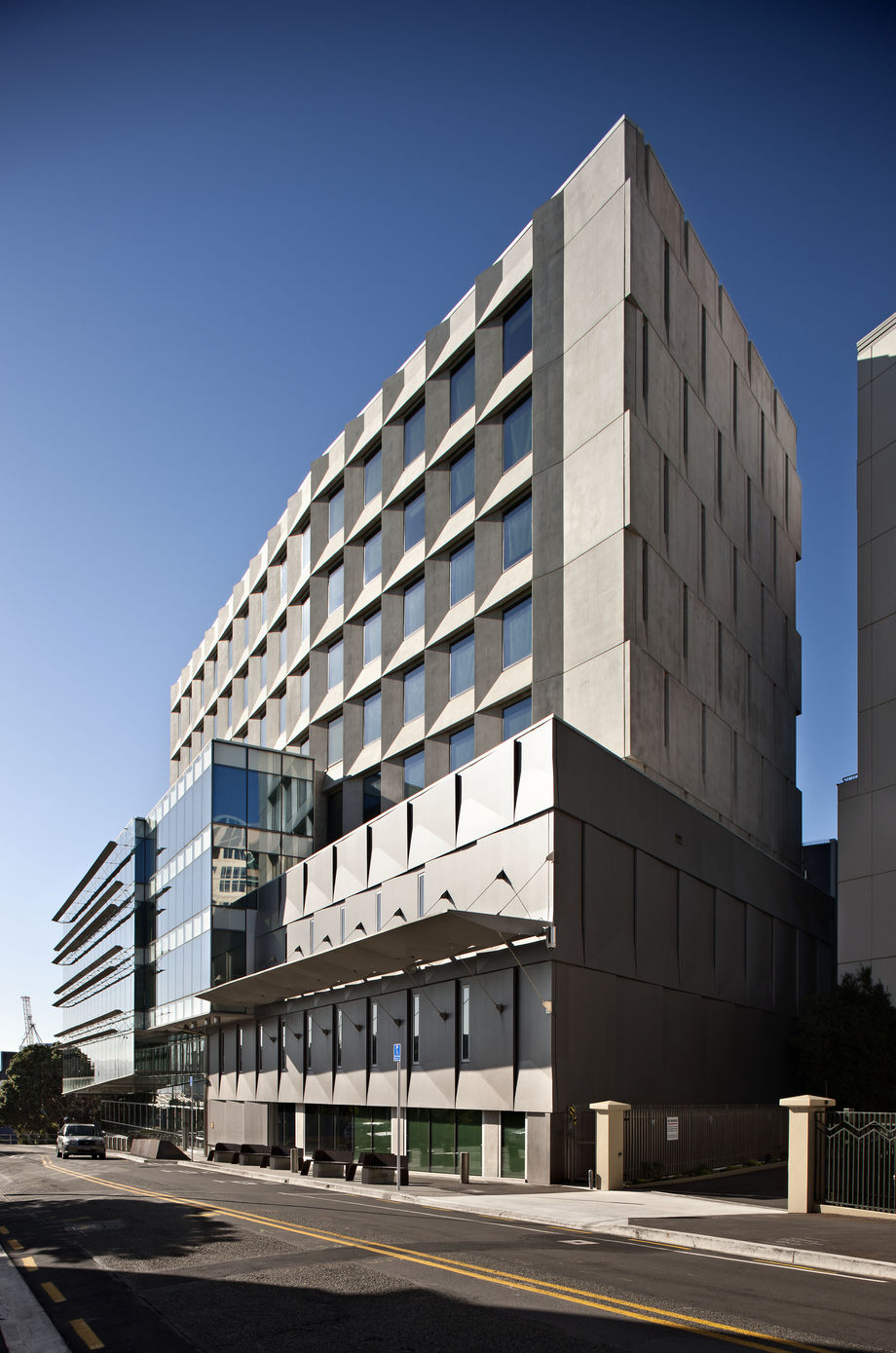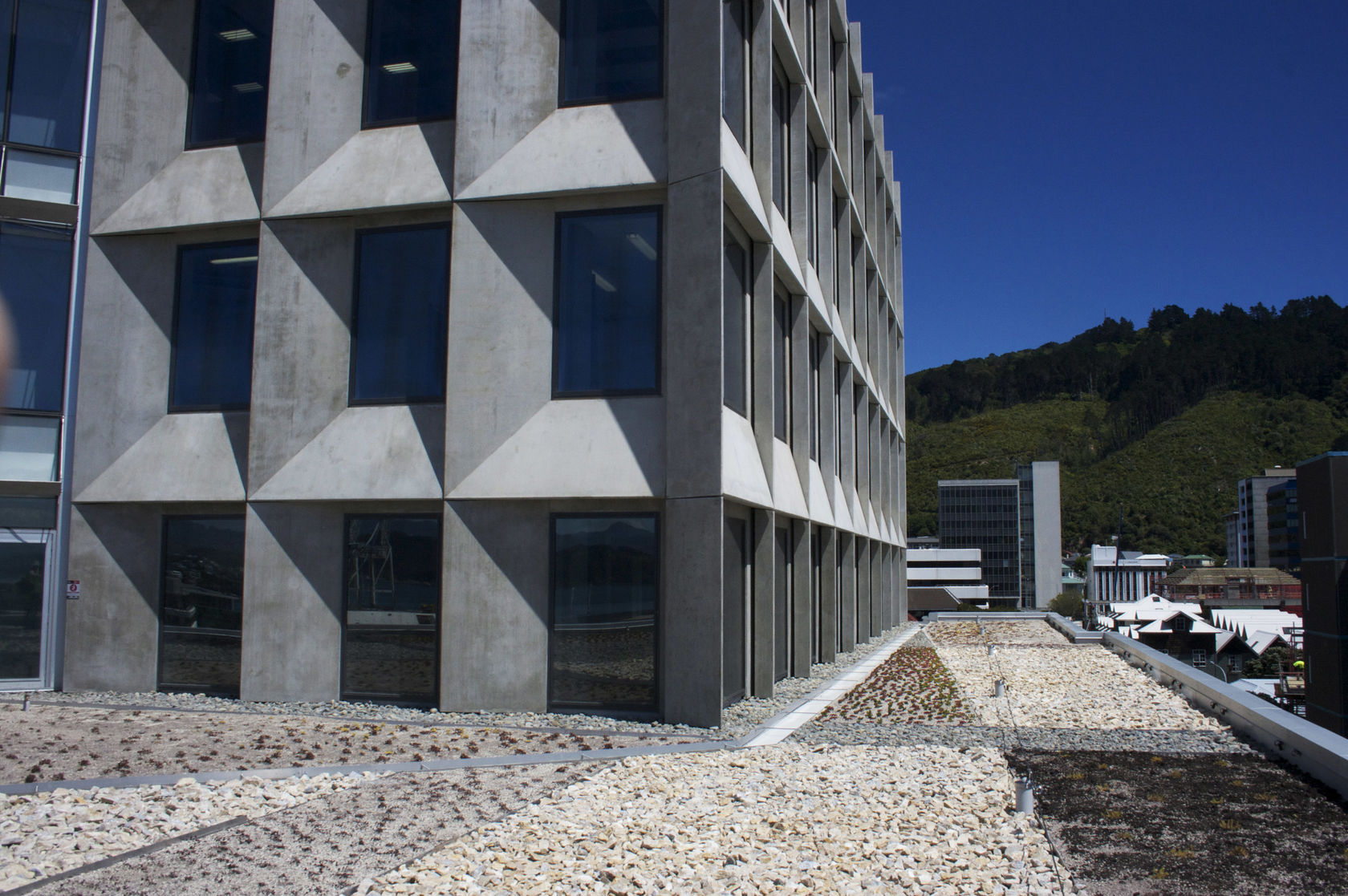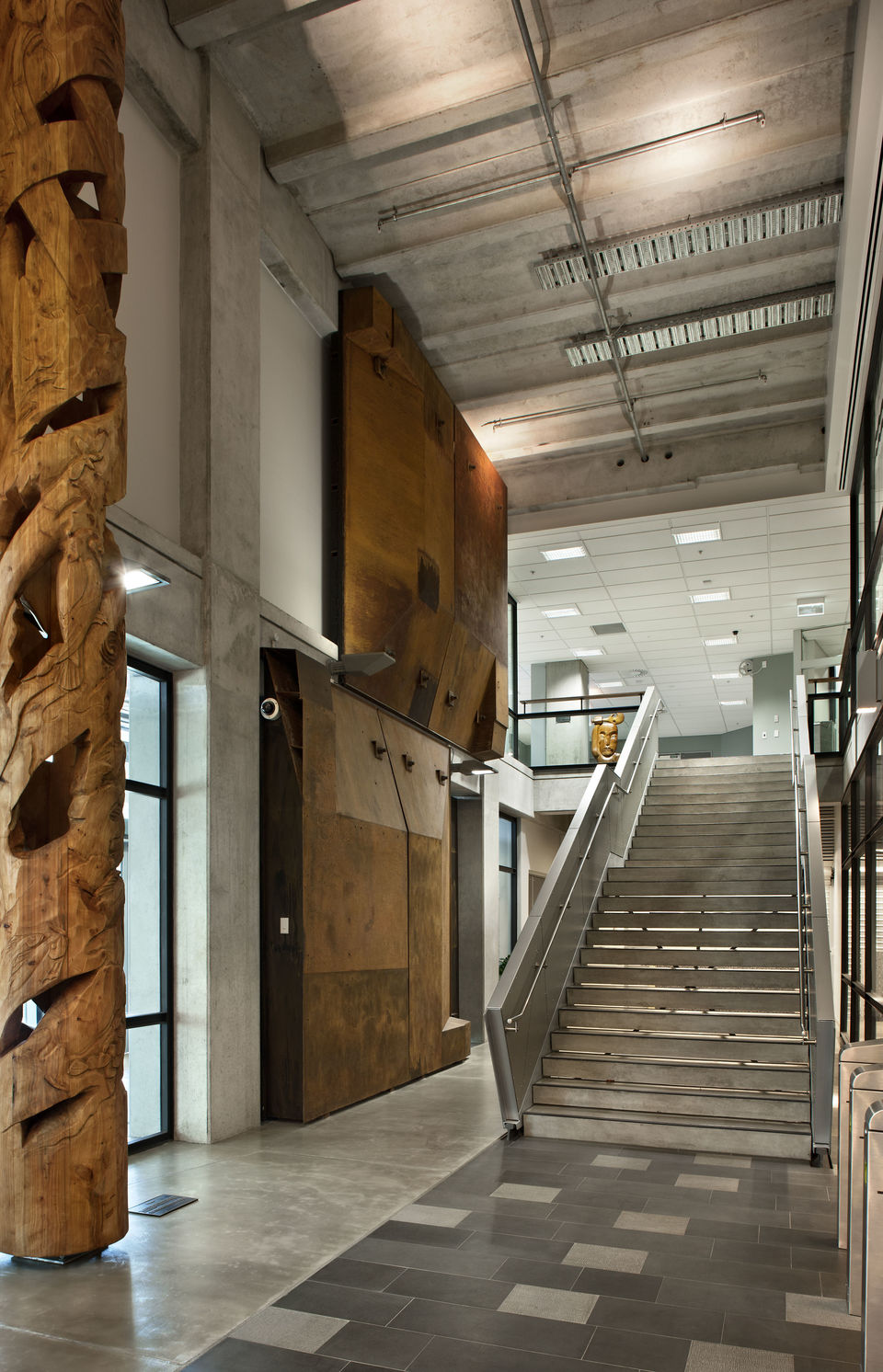
Pipitea Plaza
| Commercial |
Pipitea Plaza, completed in November 2010, sits on a triangular site at the edge of the historic Pipitea escarpment — the 19th century water’s edge. The terrain has a subtle fold at its mid point, which has been echoed by a shift in the eastern façade and a discreet memory through the broader building plan and into the detailing. This façade is reflective, rippling under the surface to recall earlier foreshore conditions. There are a diverse range of neighbouring buildings of varying quality, nature and scale.
The building design acknowledges and responds directly to its urban, built, landscape and streetscape context, presenting a dialogue between lightweight/glazed elements and heavy/concrete elements. This dialogue is promoted by contrast between clear differences in form, texture and weight. Veins of similar pattern or theme run across the different surfaces tying the building together as a cohesivewhole.



The floors are configured to facilitate clear and logical open plan work area layouts around a central core and open connecting stair with good access to natural light andoutlook.
The construction with concrete structure and floors and multiple aspects with controlled glazing, lends itself well to the incorporation of simple environmental design principles and healthy work spaces. The stepping in the plan and section in the building allows for opportunities for external access from upper levels overlooking green roofs and the courtyard and grounds around Old St Paul’s and theMarae.
The ground floor has a clearly identified central focus around the main entry/double height lobby with adjacent gym, a landscaped plaza onto the street and highly glazed ground floor tenancy spaces with positive street address onto PipiteaStreet.
Pipitea Plaza incorporates a range of innovative green features and has achieved a NZGBC 5 star design rating. It has feature landscaping at street frontage and green roofs on the building’s stepped levels, which integrate the roof terraces with the surrounding tree canopies and civic open space. These, and many other sustainable elements, are embodied within a highly specialised building design which incorporates many complex security and business continuity relatedfeatures.




